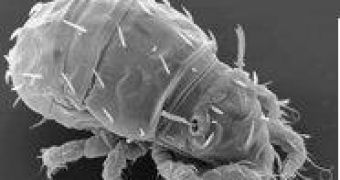Love is wonderful, but at a certain moment in the evolution, females decided they no longer needed males. (So, which one was the tough sex?).
So, they just erased them from the list and started to reproduce through parthenogenesis ("virgin birth"), by producing clones of themselves.
Males completely vanished (like in the case of some lizards) or appeared regularly just at the end of the fall, when the eggs that passed through winter needed some mixed genetic material (like in the case of plant lice).
In the case of the soil mites, males do emerge, but they are always sterile. About 10 % of the soil mite species reproduce by parthenogenesis.
But in one species from Crotoniidae family, researchers found a curious situation: it seems that after millions of years of parthenogenesis, it has become sexually active again.
This would be the first time researchers have discovered an asexual species returning to sexual activity. "These defective males provide an insight. This tells us the genes for sex are there; some just aren't functional," said Roy Norton, a soil biologist at the State University of New York, Syracuse.
Other researches have revealed that structures like insect wings and bird muscles have disappeared and later re-evolved, so Norton's team checked this for sexuality.
They investigated genes across several soil mite species, sexual and asexual.
They focused on genes important for survival as they work like evolutionary clocks, accumulating a fixed number of mutations over time. The newly made time-line of soil mite evolution showed that the basal ancestors of all soil mites reproduced sexually, but in time, they developed asexuality. "Nothing as complex as sex has ever been known to re-evolve," said Norton.
The reasons for this are not clear, but some hypotheses are emitted. "Crotoniidae spend a lot of time on trees, which is a harsher environment than in soil. So sex would be an advantage when moving from a relatively stable belowground environment to a more challenging one," said Norton.
Being a cloning process, parthenogenesis confers very little variation (just mutations), while sexual reproduction comes with a great deal of variation.
"The bigger question is why the asexual species held on to their sex genes once they became inactive. Species often dump genes that they no longer use, but these genes must have stuck around for Crotoniidae to reactivate them. It's possible that the genes served some other function important to survival." said Charles Marshall, an evolutionary zoologist at Harvard University.

 14 DAY TRIAL //
14 DAY TRIAL //